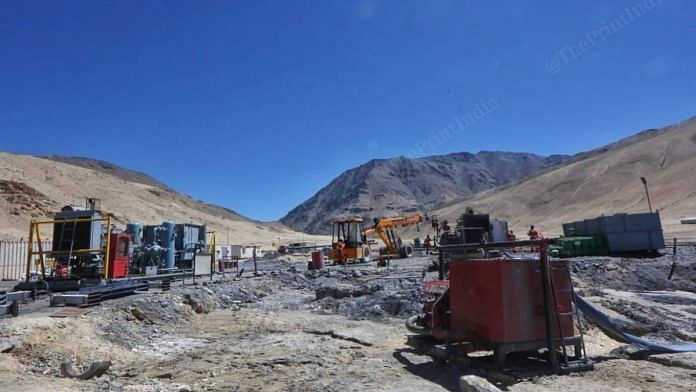Puga Valley, Leh: On the drive to Changthang Wildlife Sanctuary — over 100 km away from Leh city in Ladakh — the edges of the rocky, sandy mountains grow softer, and the pungent smell of sulphur in the air welcomes you to Puga Valley.
It’s here that India will build its first geothermal power plant, using energy from the Earth’s core to produce 1 megawatt (MW) of electricity — enough to power at least 200 homes.
Temperatures under the earth’s surface are especially hot here, where over 80 hot springs can be found.
Geothermal energy is considered completely renewable and among the least polluting, because it draws on reservoirs of hot water — called geothermal fluid — found deep underground to produce power.
The power plant will have wells drilled several kilometers deep underground and steam or hot water will be pumped up to the surface. This steam will either be used directly to provide heat, or to power a turbine to create electricity. To maintain groundwater levels, the steam will be cooled down and reinjected into the ground through an injection well.
ThePrint visited the site on 1 September.
The ground under Ladakh is the point of convergence for two tectonic plates, causing geothermal manifestations — like hot springs — to mushroom across the region. The geothermal potential is supposedly highest here in the Changthang sanctuary, nearly 14,000 feet above sea level.
In February 2021, the ONGC Energy Centre (OEC), along with the Union Territory administration and the Ladakh Autonomous Hill Development Council, signed a Memorandum of Understanding (MoU) to set up a geothermal power plant on an experimental basis, producing 1 MW of energy.
At the moment, ONGC — with help from the Iceland Geothermal Energy GeoSurvey [ISOR] — is drilling exploratory wells to determine the potential of geothermal energy that can be leveraged. But the uses go far beyond just electricity, ONGC officials said.
“Geothermal power can be used for heating Army bunkers and people’s homes, for greenhousing, which will save on import of vegetables. It can help with aqua farming, it can lead to the development of hot swimming pools. The possibilities are many,” said Uday Shankar, project manager of the proposed plant.
Also read: Electricity Bill 2022 is a remedy worse than the disease afflicting India’s power sector
A ‘blow out’
There are several types of geothermal plants. ONGC officials told ThePrint that the type of plant would be decided after the exploratory drilling concludes and reservoir studies are conducted. The ONGC hopes to drill a 1,000 meter well in its first phase to reach temperatures of over 200 degrees celsius.
Between 4 and 9 August, ONGC dug its first exploratory well, stopping at 39 meters, when the team encountered temperatures far higher than anticipated — around 120-130 degrees Celsius.
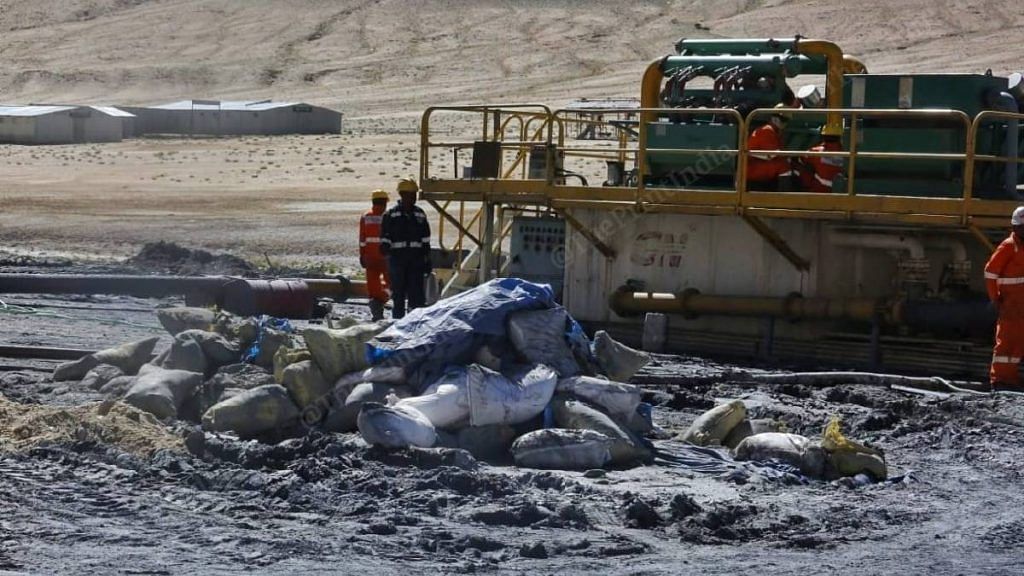
In the 1980s, the Geological Survey of India, while mapping India’s geothermal potential, made 34 boreholes in Puga Valley, ranging from a depth of 28.5 m to 384.7 m, and found a maximum temperature of 140 degrees Celsius at the lowest depth.
“This was really good news for us, because it indicates there’s much higher geothermal potential than previously thought if we’re experiencing such high temperatures at such a shallow depth,” said Ahsan Absar, a geologist with the Geological Survey of India and a geothermal consultant with ONGC.
However, on 16 August, there was a ‘blow out’.
The blow out — an uncontrolled release of geothermal fluid — spewed a dark mixture of breccia (cemented rock), bentonite (a type of clay), steam and hot water into the pristine Puga stream, alarming environmentalists from the Wildlife Conservation and Birds Club of Ladakh, who immediately notified the district administration with photos and videos of the eruption.
The administration ordered the constitution of a joint committee to visit the site and threatened to impose the Criminal Procedure Code’s Section 133 (conditional order for removal of nuisance in public places) on the ONGC if any violation was found.
When ThePrint visited the site on 1 September, the well had been dismantled and no discharge was flowing into the river.
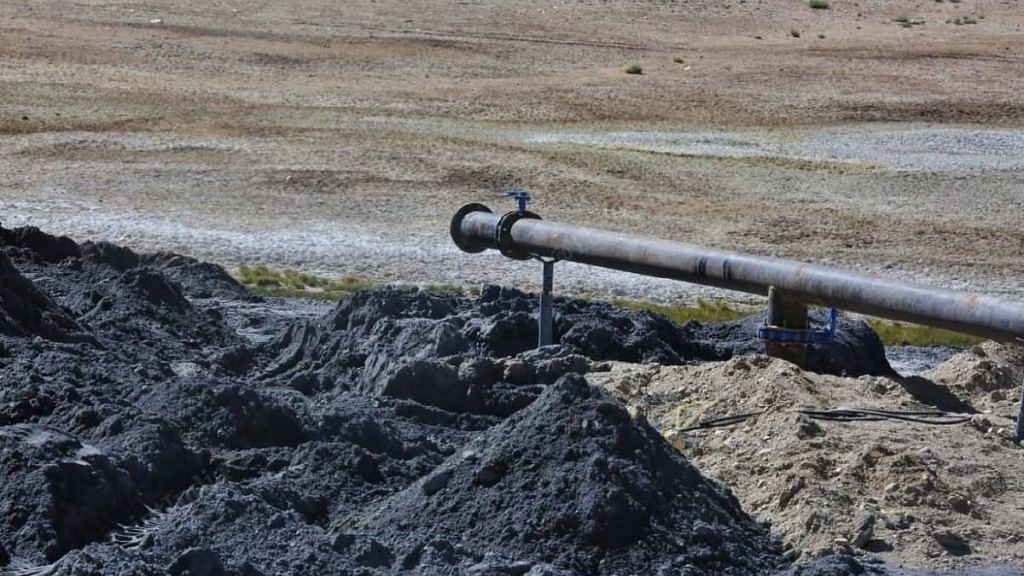
According to Shankar, what led to the blowout was a 20-minute power “trip” which stopped a cooling mechanism — designed to control the reservoir — from working, leading to an eruption.
“At one point, we lost control of the well for 12 hours, but we managed to regain control, keep it down, fill it up, and close it. Probably part of the well collapsed while it was blowing, and then we ended up filling it up with sand while it was calm,” said Geir Hagalinsson, a drilling consultant with ISOR, who added that such occurrences are rare. “Nobody expected the energy to be so much at such a shallow depth,” he added.
ONGC — an oil and gas company — does not have experience in geothermal energy extraction. At the time of drilling, between 4 and 9 August, no geothermal drilling expert from ISOR was present at the site, Hagalinsson confirmed.
Kunzes Dolma, a geothermal expert and research scholar at the Reykjavík University in Iceland, said in a press conference on 31 August that the blowout may have been prevented if drilling experts were present on site.
“Geothermal exploration and oil and gas exploration are not the same thing. This is why you need geothermal drilling experts. The question is, were the experts there at the site? Was ONGC following the rules and instructions of the drilling experts?” she asked.
ONGC officials insisted the blowout was a “freak incident” prompted by a power failure and the unusually high temperature and flow rate of the water they encountered at 39 meters. The company is now redesigning the second well before it begins drilling, under the guidance of ISOR.
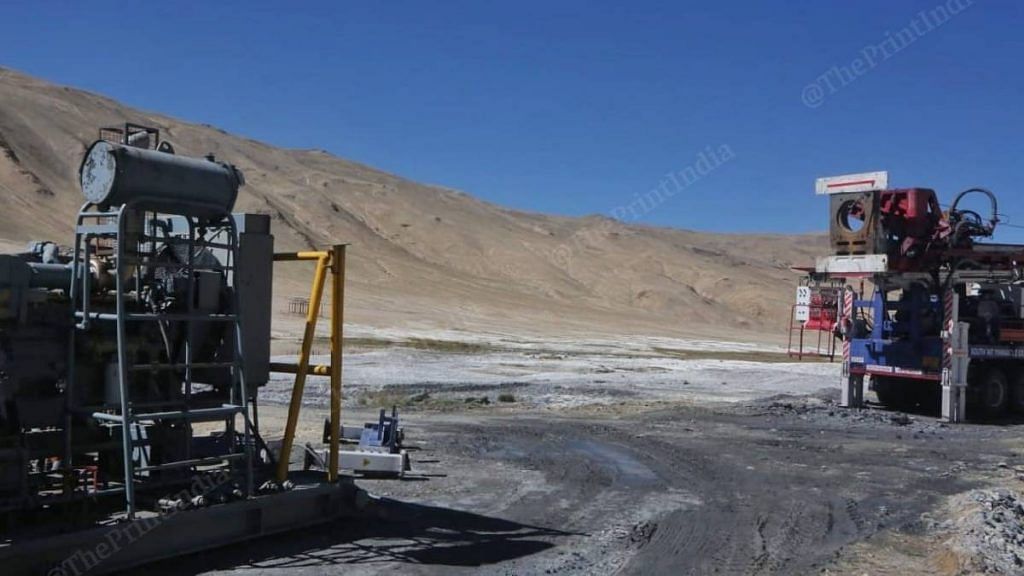
“We have no interest in harming the environment, and we will move ahead taking every precaution,” said Ravi, Director General of ONGC Energy Centre, adding, “We are preparing by keeping more tanks and a blowout preventer ready. We have already abandoned the first site, and we want to make sure what happened in the first site does not reoccur in the second.”
While ONGC and ISOR officials claim the substances from the blow out were benign since they emerged from a shallow reservoir, blow outs occurring in deeper wells can pose serious risks, contaminating the environment with heavy metals.
Concerns about project’s future
The blow out was enough to rattle local environmentalists who have demanded that the project be sensitive to its ecological surroundings, given it lies in a wildlife sanctuary of cultural importance.
“We are not against the project, but we want proper implementation of all environmental norms,” said Tsewang Namgyal, general secretary of the Wildlife Conservation and Birds Club of Ladakh.
The pilot project — which is spread across 3 hectares — was exempt from both environmental impact and biodiversity impact assessments owing to its size. The State Board for Wildlife also approved the project without imposing any mitigation measures, citing its exploratory nature.
Puga valley is characterised by a dry desert climate and is home to several endangered species such as the snow leopard, Himalayan wolf, and six species of wild ungulates, among others. The Changthang sanctuary also has several high altitude wetlands that are significant for migratory birds. It is, according to a government report, the only breeding site for the rare black-necked crane and bar-headed goose.
“These are some of the most productive ecosystems in Ladakh, not only for wildlife but also for nomads who use these high-altitude grasslands for grazing,” said Tsewang Namgail, director of the Snow Leopard Conservancy and member of the Ladakh State Wildlife Board. “We need to have some idea of how this project might impact the ecosystem.”
The long-term impacts of geothermal plants on the environment are not very well studied, but a recent paper suggests the management of geothermal systems “should integrate use of resources while simultaneously protecting the diversity of thermal features”, to enhance ecosystem recovery.
Apart from being a source of energy, the hot springs in Puga Valley are significant sites for research into the origins of life and astrobiology, and have been used in traditional medicinal practices.
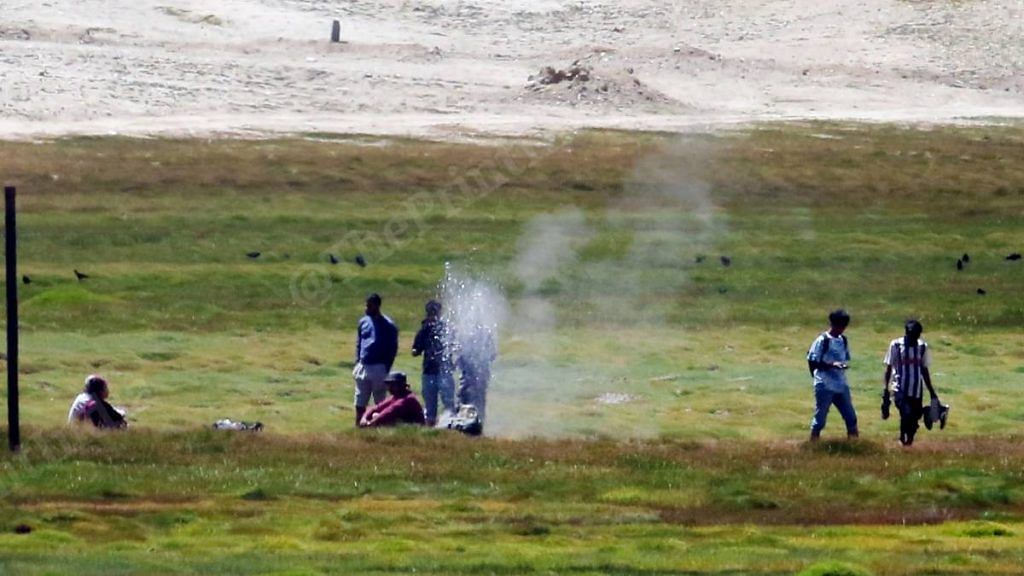
Dr Tashi Stobgais, an amchi (traditional healer), said the hot springs in Puga are used to help treat arthritic pain, spondylitis and infections of the stomach, eyes and nose.
“I think the project is very much necessary. There is definitely a need for electricity in Ladakh,” he said, adding, “But I don’t know how the technology works. What if it leads to the springs drying up in the long term?”
Dr Padma Gurmet, another amchi and director of the National Institute of Sowa-Rigpa and a member of the State Wildlife Board, said he hoped the project would lead to better facilities for amchis and their patients, and that there would be a consultative meeting with the ONGC before the power plant is set up.
In the nearest village to the proposed plant, Sumdo, residents were concerned about the change of colour in the stream across their homes.
“We have electricity, but not in every house. We feel we will benefit if the plant comes up, but when we saw that the stream changed colour, we got worried,” said Karma Yenden, a resident of the village. “Talk of geothermal energy has been going on for decades. It’s difficult to work in such an area, so we will wait and watch if the plant comes up.”
Meeting India’s goals
Late last month, the Indian government submitted its latest climate goals to the United Nations Framework Convention on Climate Change, pledging to reduce emissions intensity of its GDP by 45 per cent below 2005 levels and to achieve about 50 per cent cumulative electric power installed capacity from non-fossil fuel sources by 2030.
According to the Ministry of New and Renewable Energy, India has a geothermal potential of 10 GW.
“Unlike solar or wind, geothermal energy is continuous and doesn’t require any kind of storage, and also emits the least carbon and takes up less of land footprint,” said Shibani Khanra Jha, associate professor of civil engineering at BITS Pilani, adding: “At the moment, producing geothermal power is expensive because the technology is new to India. But it can definitely become an important part of India’s energy mix.”
Most of India’s renewable energy push is being shouldered by solar and wind energy. Even though geothermal is likely to make up only a fraction of India’s energy mix, its introduction — especially in a place like Ladakh — is important, experts say.
“I hope that, moving forward, ONGC is more mindful and there are no issues in drilling the wells. This is an important project, we should not mess it up,” said Dolma.
(Edited by Nida Fatima Siddiqui)
Also read: Natural spas, electricity: IIT-led team uncovers power of India’s Western Ghat geysers


